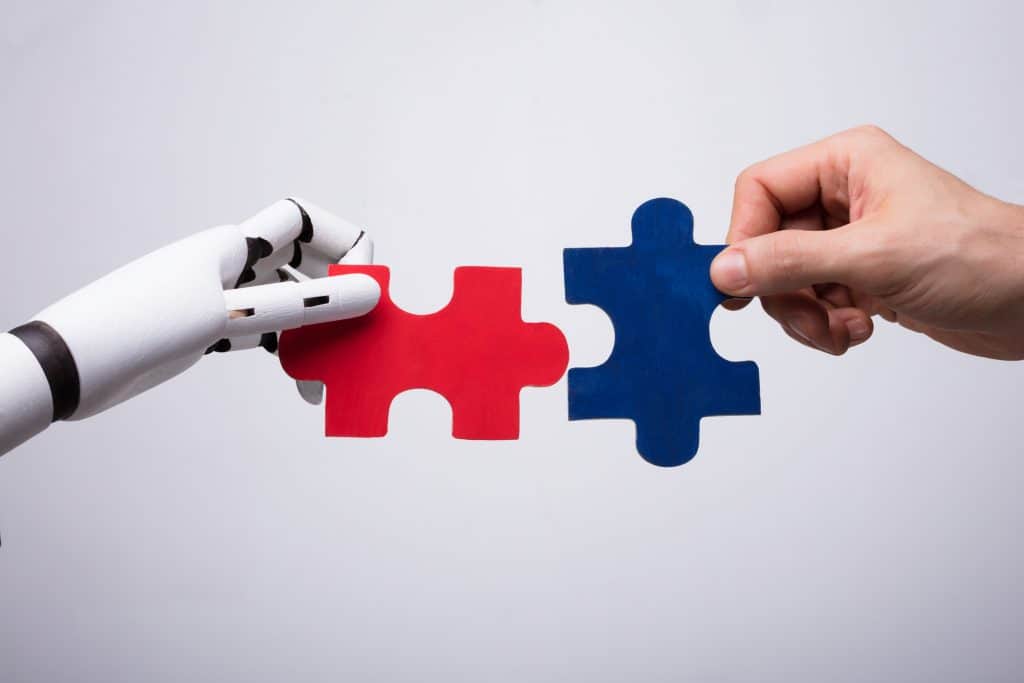

There has been an incredible rise of AI in the field of education in the past decade. Proliferation of smart technology has touched many schools, universities, and even kindergartens. For example, in Great Britain, schools have implemented robot teachers to deal with staff shortages, while in Irvine Unified School District, kids are wearing 3D glasses to study science. Chalkboards, textbooks, and videotapes are being gradually replaced by VR systems, smartphones, tablets, the Internet of Things, and robots. How can we measure the impact of digitalization on the learning curve and teaching environment? Representatives of the educational field have different opinions on whether the new era is beneficial or dangerous for the generations to come and how to address the ethical side of the matter.
The world has been rapidly changing as well. We are now facing ever-increasing populations, unfair distribution of wealth, impending ecological disaster, social inequality, and new demands from the global economy. In order to stay relevant and prepare children for future jobs, the educational system that we know today will have to adapt and improvise.
Educational Hyper-Personalization
One way in which AI can alter school curricula and address changing educational needs is through personalized learning. This approach assumes that each student is a unique individual with learning needs that should be addressed separately. Personality and aptitude tests help in building an individual learning plan based on a student’s points of strength, weaknesses, core values, and learning type. Each kid also requires personalized learning channels through which it is easier for them to digest and process information. In this regard, artificial learning improves the existing system of education by helping children be their unique selves and learn at the most comfortable, reasonable, and smart pace.
Distant Knowledge
Another significant advantage of the digital education era is the geographical expansion of students’ opportunities. Online platforms, applications, and webinars have made distant learning a means of receiving higher education and enriching oneself in an affordable way. Students from remote areas, underprivileged backgrounds, or poor families can now study using just a computer or any other device. Accessible education also addresses the problem of illiteracy, allowing people to learn and educate themselves wherever they are currently residing.
Digital Motivation
However, there is a certain weight that educational leaders feel when it comes to digital learning. One of the risk areas concludes in students’ motivation. How to keep them wired and curious when information is so easily accessible?
Fewer and fewer kids today feel the need to continuously put effort into a given assignment, as they understand that help will come from online resources. They can ask Google or search for test answers that were posted to the web by another student. In order to put any data into long-term memory, we need to repeat it over and over again, preferably in verbal, oral, and written forms.
Unfortunately, there is a certain tendency in children to prefer not to put too much effort into their home assignments or overall educational process because they do not really see the point. Why train themselves and learn historical facts, for example, by heart when anything can simply be Googled?
Social Fragility
Innovative learning definitely has some positive outcomes. It is, however, important to remember that no advances in technology (especially those that affect children) can take place without social and emotional implications. Humans are creatures that have been evolving within a strong community. Social bonds, mutual learning, and peer guidance have always played vital roles in the establishment of society.
As technological forces are growing stronger, emotional bonds are getting weaker. When kids spend most of their time looking into the black or blue screens of their devices, they unintentionally steal time from playing with each other, from communication and building friendships. Understanding the utter fragility of human contact is essential to empowering and sustaining emotional connections in the world of digitalized classrooms.
Integrative Learning Systems
Fundamental questions about what education is and how it should be delivered can be addressed by the new synergic learning approach. Digital learning can provide students with a certain type of online companionship where mutual education will take place. For example, peer-to-peer learning platforms provide users with a range of features they can use to find a partner to learn with.
Hybrid language platforms such as Polygled allow users to teach each other through their devices. Chat partners from around the globe join together in a dialogue to practice foreign languages with one another.
E-learning platform Udemy aims at making education easily accessible and affordable by allowing students to receive knowledge from their more than 10,000 subject matter experts.
Interactive learning application Hologo uses virtual images to educate its users about the construct of the world.
All these platforms make education easier, more enjoyable, accessible, and fun. And, most importantly, they bring people
together and unite them in their drive for knowledge.
Fourth Industrial Revolution
In the age of growing and developing technological advancements, it is crucial to preserve our human nature. Digitalization of society and education should not tear us apart but instead bring us together and make us stronger.
Being humans is a unique and treasured experience that is full of emotional colors and sometimes psychological dramas. As we bring AI and robots into the world where our children will have to live and thrive, we should understand the effects and take responsibility for making their coexistence pleasant, safe, and prosperous.
References
https://www.telegraph.co.uk/technology/2019/10/23/british-schools-test–robot-teachers-tackle-staff-shortages/
https://www.irvinestandard.com/2019/technology-transforms-irvine-classrooms/
https://www.raconteur.net/technology/future-classroom-digital-education
https://www.forbes.com/sites/cognitiveworld/2019/07/12/ai-applications–in-education/#481e1f8a62a3
Maria Vavilova is head of communications at Polygled (polygled.com)—a hybrid educational platform specializing in the study of languages, using free language practice with native speakers. The focus of Polygled is to address the language learning needs of developing countries, especially those in Asia and Latin America.







